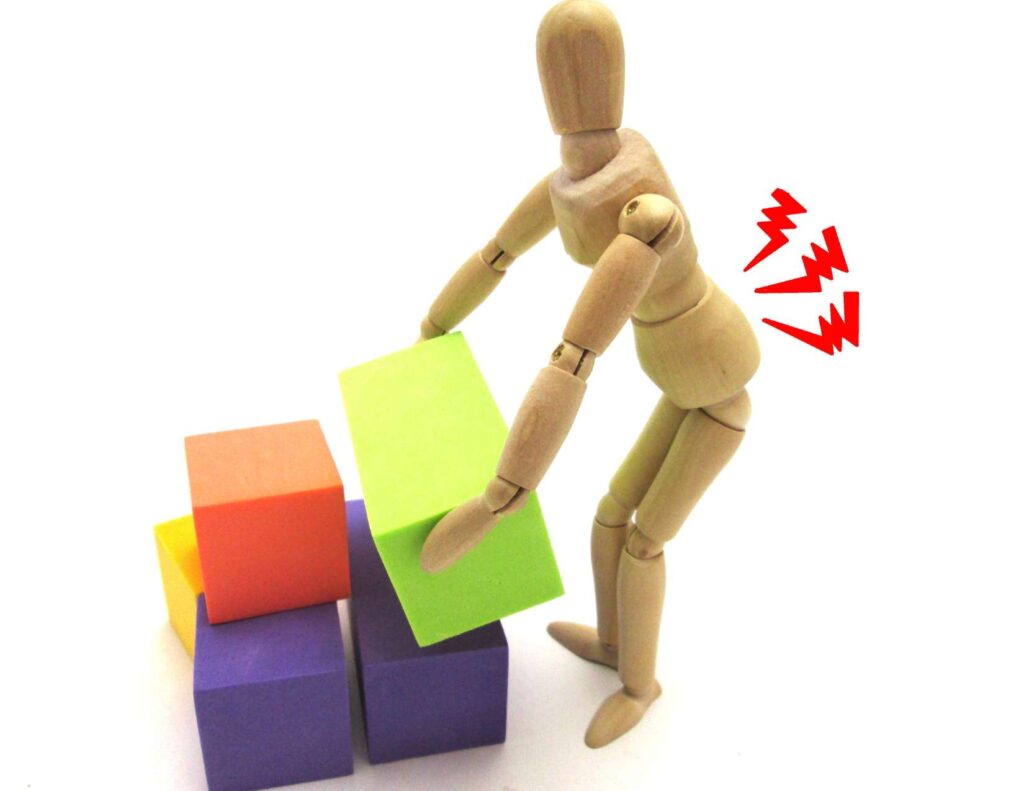The Ultimate Guide to Conquering the Last Stages of Sciatica
Last Updated on June 5, 2023 by Dr. Tiffany Egan
As a chiropractor with 10+ years of experience, I’ve seen the debilitating effects of sciatica on people, including myself. Sciatica is a painful condition caused by the compression or irritation of the sciatic nerve, which runs from the lower back to the legs. It can affect anyone, and the pain can be excruciating, making it hard to carry out daily activities. The last stages of sciatica can be particularly challenging, but with the right management techniques, it is possible to manage pain and promote healing.

Table of Contents
Understanding Sciatica and its Causes
Sciatica is a common condition that affects millions of people worldwide. It is caused by the compression or irritation of the sciatic nerve, which runs from the lower back to the legs. The most common cause of sciatica is a herniated or slipped disc, which puts pressure on the nerve. Other causes include spinal stenosis, degenerative disc disease and spondylolisthesis. Even sciatica during pregnancy or sciatica postpartum can happen.
The symptoms of sciatica can vary depending on the severity of the condition. The most common symptoms include pain in the lower back, buttocks, and legs, numbness, tingling, and weakness in the affected area. These symptoms can be mild or severe, and they can affect one or both sides of the body.
What are the Last Stages of Sciatica?
The last stages of sciatica occur when the condition has been left untreated for a long time. The pain can become chronic and severe, making it hard to carry out daily activities. In some cases, the pain can be so severe that it leads to disability.
This can affect a person’s ability to work, socialize, and carry out daily activities. The constant pain can also lead to depression and anxiety, which can further exacerbate the condition.

What is Stage 4 Sciatica?
During stage 4 of sciatica, the pain can radiate down the legs, making it hard to walk or stand for long periods. The pain can also be accompanied by muscle weakness and numbness. This can affect a person’s ability to perform simple tasks such as lifting objects or even getting out of bed.
How to Manage Pain During the Last Stages of Sciatica
Managing pain during the last stages of sciatica can be challenging, but it is possible with the right techniques. Pain management techniques can help reduce the intensity of the pain, making it easier to carry out daily activities. The following are some pain management techniques that can help during the last stages of sciatica:
Medications
Medications such as non-steroidal anti-inflammatory drugs (NSAIDs) and muscle relaxants can help reduce pain and inflammation. In some cases, stronger medications such as opioids may be prescribed to manage sciatica pain that’s so bad that you can’t even walk. However, these medications should be used with caution as they can be addictive and have side effects.
Physical Therapy
Physical therapy is a non-invasive treatment option that can help reduce pain and improve mobility. A physical therapist can design a customized exercise program that can help strengthen the muscles and improve flexibility, reducing the pressure on the sciatic nerve. Physical therapy can also help improve posture and reduce the risk of recurrence.
Acupuncture
Acupuncture is a traditional Chinese medicine practice that involves the insertion of thin needles into specific points on the body. Using acupuncture for sciatica can help reduce the pain and inflammation, promoting healing. It can also help reduce stress and anxiety, which can exacerbate the condition.
Chiropractic Care
Chiropractic care involves the manipulation of the spine to relieve pain and improve mobility. A chiropractor can use various techniques such as spinal adjustments, massage, and stretching to reduce the pressure on the sciatic nerve, promoting healing.
Getting a chiropractic adjustment for sciatica made a world of a difference for myself when I was dealing with horrible sciatica pain. And it has dramatically decreased the symptoms of my patients as well!

Pain Management Techniques for Sciatica
Pain management techniques for sciatica can help reduce the intensity of the pain, making it easier to carry out daily activities. The following are some pain management techniques that can help:
Heat and Cold Therapy
Heat and cold therapy can help reduce pain and inflammation. Applying a heating pad or hot water bottle to the affected area can help relax the muscles and reduce pain. Applying an ice pack can help reduce inflammation and numb the area, reducing pain.
Try alternating between ice and heat to promote better circulation to promote faster healing of the supporting tissues.
Massage
Massage can help reduce muscle tension and improve blood flow, reducing pain and promoting healing. A massage therapist can use various techniques such as deep tissue massage, Swedish massage, and pressure point or trigger point therapy to reduce pain and improve mobility.
Yoga
Yoga can help improve flexibility and reduce muscle tension, reducing the pressure on the sciatic nerve. Yoga poses such as downward-facing dog, pigeon pose, and cobra pose can help stretch the muscles and promote healing.

Exercises for Sciatica Pain Relief
Exercises can help reduce pain and improve mobility during the last stages of sciatica. The following are some exercises that can help:
Hamstring Stretch
The hamstring stretch can help reduce tension in the hamstring muscles, reducing the pressure on the sciatic nerve. To perform this exercise, lie on your back with your knees bent. Slowly lift one leg and straighten it, keeping your foot flexed. Hold for 30 seconds and repeat on the other side.
Knee-to-chest Stretch
The knee-to-chest stretch can help stretch the lower back muscles, reducing the pressure on the sciatic nerve. To perform this exercise, lie on your back with your knees bent. Slowly lift one leg and bring it towards your chest, holding it with both hands. Hold for 30 seconds and repeat on the other side.
Piriformis Stretch
The piriformis stretch can help reduce tension in the piriformis muscle, reducing the pressure on the sciatic nerve. To perform this exercise, sit on the floor with your legs straight. Bend your right knee and place your foot on the outside of your left knee. Twist your torso to the right and place your left elbow on your right knee. Hold for 30 seconds and repeat on the other side.

Alternative Treatments for Sciatica
Alternative treatments can help reduce pain and promote healing during the last stages of sciatica. The following are some alternative treatments that can help:
Herbal Remedies and Supplements
Herbal remedies such as turmeric, ginger, and devil’s claw can help reduce pain and inflammation, promoting healing. These remedies can be taken in the form of supplements or added to food. Additionally, magnesium for sciatica has been scientifically proven to support conditions with nerve pain.
Essential Oils
Essential oils such as peppermint oil, lavender oil, and eucalyptus oil can help reduce pain and inflammation. These oils can be applied topically or diffused in the air.
Mind-Body Techniques
Mind-body techniques such as meditation, deep breathing, and visualization can help reduce stress and anxiety, promoting healing. These techniques can also help reduce pain and improve mood.

Lifestyle Changes to Promote Healing During the Last Stages of Sciatica
Lifestyle changes can help reduce pain and promote healing during the last stages of sciatica. The following are some lifestyle changes that can help:
Maintain a Healthy Weight
Maintaining a healthy weight can reduce the pressure on the sciatic nerve, reducing pain and promoting healing. A healthy diet and regular exercise can help achieve and maintain a healthy weight.
Improve Posture
Improving posture can reduce the pressure on the sciatic nerve, reducing pain and improving mobility. Avoid sitting or standing for long periods and use ergonomic chairs and desks.
Practice Stress Management Techniques
Practicing stress management techniques such as meditation, deep breathing, and visualization can help reduce stress and anxiety, promoting healing.
Signs of Sciatica Improving
Here are some typical signs to look for when sciatica is improving:
The most common signs of sciatica improving include a reduction in pain and discomfort, increased range of motion, and improved flexibility. Additionally, you may experience better sleep, improved mood, and increased energy levels.

Signs Sciatica is Getting Worse
Have you ever wondered, “why is my sciatica not going away?” There are relatively few cases when surgery is actually warranted for sciatica. In those cases it’s recommended to talk with a spine specialist who can discuss options. You will need to have special imaging performed and go through a thorough health history before considering surgery for sciatica pain.
It’s important to seek medical attention if the pain is severe and does not improve with rest, conservative treatment and over-the-counter pain relievers. Additionally, if the pain is accompanied by muscle weakness, loss of balance, or incontinence (bowel/bladder changes), seeking medical attention is crucial.
Prevention of Sciatica Recurrence
Preventing sciatica recurrence is essential to avoid the last stages of sciatica. The following are some tips to prevent sciatica recurrence:
Maintain Good Posture
Maintaining good posture can reduce the pressure on the sciatic nerve, reducing the risk of recurrence. Use ergonomic chairs and desks, and avoid sitting or standing for long periods.
Exercise Regularly
Regular exercise can help strengthen the muscles and improve flexibility, reducing the risk of recurrence. It’s also very important to wear the best shoes for sciatica that are supportive and help you feel stable throughout your workouts.
Practice Good Body Mechanics
Practicing good body mechanics can reduce the risk of recurrence. Avoid lifting heavy objects and use proper lifting techniques.

Conclusion
Sciatica can be a challenging condition, but with the right management techniques, it is possible to manage pain and promote healing during the last stages of sciatica. Pain management techniques such as medications, physical therapy, and alternative treatments can help reduce pain and inflammation. Exercise and lifestyle changes can also help promote healing and reduce the risk of recurrence. Remember to consult a healthcare professional for a customized treatment plan that is suitable for your needs. With the right care and support, it is possible to manage sciatica and promote healing!
It is important to keep track of your everyday symptoms while managing sciatica. That’s why I created a Sciatica Pain Diary to record everything!
If you feel like this article was helpful or could be helpful for someone you know, please feel free to share it so they can start feeling better today!







